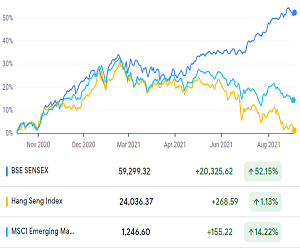Best Stock Valuation Method –
Listed vs. Private Companies
by Rajat Sharma | May 12, 2016
There are 2 rules to stock valuations:
First, there is nothing like a best stock valuation method.
Second, The rules vary based on many factors including (but not limited to) type of company – private vs public; nature of business – cash generating business vs. business that operate with big debts; capital structure mix (i.e. amount of debt vs. equity) etc.
Mostly, in business schools you will be taught (i) discounting of future cash flows (ii) dividend discount model (iii) price earnings multiple (iv) price to book value, and some other concepts like enterprise value, Graham number etc all in order to arrive at a fair value of a stock.
Also Read –
DCF Analysis | Method of Stock Valuation
Dividend Discount Model Formula | Gordon Growth Model
Price to Earnings Ratio (P/E Ratio)
Price to Book Value Ratio (P/B ratio)
Commonly Used Stock Valuation Method
In a majority of cases analysts use price earnings method, unless when the underlying company to be valued is a loss making concern (where EPS is negative, it would not be possible to arrive at a PE figure). For loss making concerns, analysts rely on either the enterprise value or any other method.
PE = Price of share / Earnings Per Share (EPS)
PE Method of stock valuation is simple, and as accurate as any other complicated method and is calculated by dividing the current share price by the trailing 12 months EPS i.e. reported EPS of the last 4 quarters. P/E Ratio indicates how much the market is willing to pay today, to get each rupee of the future earnings of the company.
Also See: Video explanation on PE valuation
And: How to Compare Stocks with Negative EPS
A couple of things to keep in mind about the PE valuation method is that:
[1] Compare PE multiple of a stock with its own historic PE multiple – for example its avg 10 year PE. Look at the Price earnings multiple for ITC in the chart below. It has come down over the last 2 years due to non improvement in EPS.
10 YEAR PE ANALYSIS OF ITC
[2] Compare PE multiple of a stock with its industry PE multiple – this will tell you whether the stock is cheap or expensive compared to its peers. Then look for qualitative reasons to justify such pricing.
Difference in Approach for Listed and Privately Held Companies
While analysts would love to use price earnings stock valuation method for privately held companies, these is a limitation. Privately held companies do not have an actively traded stock price – i.e. there is no appraisal of investor.
Appraisal of Investor or Price Discovery: the whole premise of the efficient market hypothesis is that the price of a share which is publicly traded reflects all the available information about the company and hence the price is accurate and correct.
In other words, having a large base of investors who can buy and sell on stock exchanges helps in determining the correct/ fair market price for a stock. Similarly, the stock price of a privately held company must also be determined by the existing shareholders (i.e. by how much they are willing to pay for each share). This price is the price at which shareholders record their privately held shares in their books of accounts. How they arrive at this price depends on accounting policies and factual position of business assets and liabilities.
What public listing does for a business/ company is that it unlocks value and helps in price discovery. It is interesting that in both private and listed companies, ultimately the price is determined by the shareholders.
Example:
Flipkart’s value now down 40% as Fidelity and valic mark down their investment. Only ones who erred were the fund managers! Rest did nothing
— Rajat Sharma (@SanaSecurities) May 5, 2016
Take the example of Flipkart. Since its first round of funding, private equity investors have constantly revalued the price of Flipkart stock in their books of accounts based on their assessment of the future value of Flipkart’s business.
Some of the Private Companies with Billion Dollar Plus Valuation
This explains the concerns around valuations of private businesses which many believe are overvalued these days, particularly for tech businesses. Naturally, private equity investors looking for an exit via IPO or otherwise, will want to show an inflated price for these businesses in their books.
An easier way to value private companies is to benchmark them to the industry PE of their listed peers (a good source for this is the – Legend scorecard in the Capital Market magazine). Of course doing that will take away any business specific advantage which the company may have and the analyst will have to make adjustments to take this into account.
Share this post
Don’t forget to leave a comment
Don’t forget to leave a comment
1 Comment
Submit a Comment
Other Posts
Other Posts
Will Upcoming IPOs Continue to Deliver Stellar Returns?
The primary market has been in strong action since the beginning of this year. The IPO momentum has been strong this year. More than 40 companies have raised record amounts via their initial public offerings thus far. The Companies have raised Rs. 84778.16 Cr. as...
Factors Driving the Stock Market Rally
After a steep market selloff, markets generally take time to recover, but this time market recovered quickly. It seems that the efforts of the government combined with central banks have resulted in a somewhat V-shaped recovery in the stock market. Since March 2020,...
ITC Rally ! What Should Investors do Now?
Over the last five days, the ITC stock has rallied almost 10%. Recently, GST Council recently made some changes in GST rates. The council however made no rate change in any of the cess sectors, including tobacco. This is a positive development for ITC. ITC stock has...
Free Investment Newsletter
Join us and connect with over 65,000 subscribers who benefit from our insights on the latest
in the world of stocks and personal finance.
Free Investment Newsletter
Join us and connect with over 65,000 subscribers who benefit from our insights on the latest
in the world of stocks and personal finance.







As you said that valuation method differs from company to company but we can adopt some genuine method that works normally. We can also choose Dividend Discount Model (DDM) and Discounted Cash Flow Model (DCF) as valuation method.